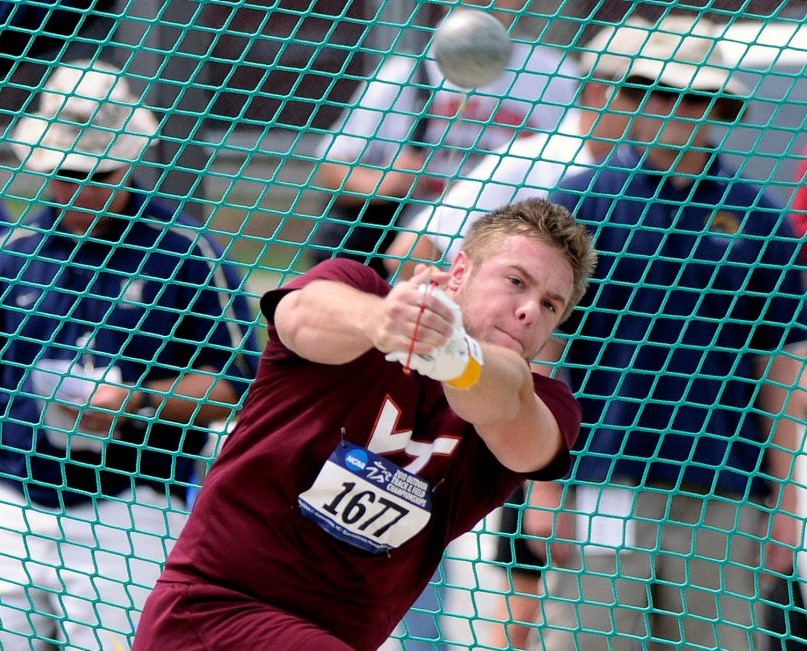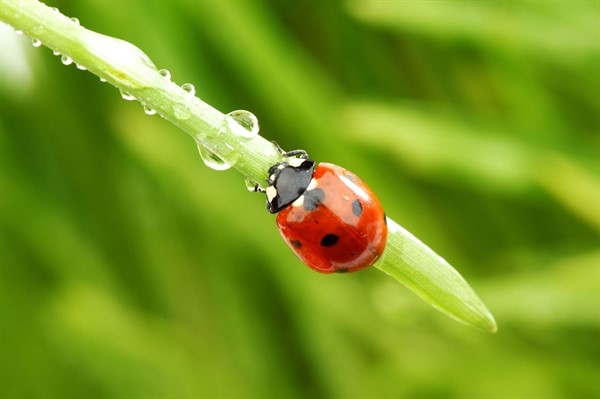
The men’s hammer throw event at the Summer Olympics consists of throwing a 16-pound metal ball attached to a grip by a steel wire out of a 7-foot diameter circle. Usually, a primal scream accompanies each throw.
The event’s competitors feature hefty men with massive arms, powerful legs, and thick chests. Their workouts consist primarily of lifting weights, and they tend to develop allergic reactions to anything cardio.
Marcel Lomnicky fits that mold, but those familiar with the former Virginia Tech great and one of the world’s best hammer throwers might be stunned to learn that this hulking man started his journey into sports as a figure skater.
Yes, a figure skater.
“My mom signed me up for figure skating when I was 6 because I was overweight and I needed to lose weight,” Lomnicky said. “My guess is that she knew someone at the local figure skating club, so she gave it a shot. All my friends were playing ice hockey. It also may have helped my hammer throwing career, as both are rotational sports, and the hammer technique always came very natural to me.
“I also lost a lot of weight, but then gained it all back for the hammer,” Lomnicky said. “I have never put on skates since those days, though. Maybe after I retire from track and field and want to be fit again. Who knows?”
For sure, Lomnicky won’t be starting any weight-loss regimens any time soon. Starting Sunday, the 34-year-old begins his quest for a medal by competing in the hammer throw for his native Slovakia at the Summer Olympics taking place in Tokyo.
These Olympics mark the third for Lomnicky, who competed in 2012 in London and in 2016 in Rio de Janeiro. He becomes the first student-athlete with Virginia Tech ties ever to compete in three Olympic Games.
“Wow, it is truly an honor to be a part of history like that,” he said. “It would be a little sweeter if I was able to bring an Olympic medal back to Blacksburg, though.”
That is not an unrealistic goal, as he seeks to become Virginia Tech’s third medalist, joining Bimbo Coles (bronze medal, men’s basketball, 1988) and Kristi Castlin (bronze medal, 100-meter hurdles, 2016). In his Olympic debut in London, Lomnicky failed to qualify for the finals, but in Rio, he finished fifth overall with a top throw of 75.97 meters (249 feet, 3 inches).
Then in June, he made a throw of 79.19 meters to finish first at the Slovakia National Championships. That throw marked a personal best and qualified him automatically for the Olympics.
That throw would have won a gold medal in Rio. Dilshod Nazarov of Tajikistan took the gold with a top throw of 78.68 meters.
“Although I was still ranked high in the World Athletics Rankings, I was still chasing the strict Olympic standard that would guarantee my place among top 32 in the world in my event,” Lomnicky said of his performance at the Slovakia National Championships. “After they measured my throw, not only had I made the Olympic team, but I had also thrown my personal best after seven years. Perhaps I am prouder of the distance than the Olympics. It became personal, but qualifying never gets old.
“I know I will be physically ready for it,” Lomnicky said. “The question is will I be ready mentally? I hope my past Olympic experiences will help me and give me an edge over my competitors.”
Lomnicky’s international success, though, hasn’t come without sacrifices. Slovakia lacks some of the resources needed to churn out medal-winning Olympians, and that forced Lomnicky to make some tough choices, including leaving his wife and two young children behind in Slovakia while he trained at the United States Olympic Training Center in Chula Vista, Calif., just outside of San Diego.
Lomnicky spent three months earlier this spring in Chula Vista, and that time obviously helped him. He probably wouldn’t have thrown 79.19 meters without that training.
“My wife understands very well what this sport needs at this level,” Lomnicky said. “She knows that without sacrifices it cannot be done. I once sat with her, and we started talking. I told her that I ideally need three months of training camp in a perfect weather place to maximize my chances for the Olympic Games. I asked how much of that time was she willing to give me considering our growing family. She said go ahead and do whatever you think will give you the best chance for an Olympic medal.
“I honestly could not ask for a better wife. Of course, it was more than challenging for her to stay home all alone with two young kids, but at the end of the day, I am a three-time Olympian because of her.”
No matter what happens in Tokyo, Lomnicky plans to continue training in hopes of competing in the 2024 Olympics in Paris. After that, he is unsure about his future.
— Written by Jimmy Robertson

